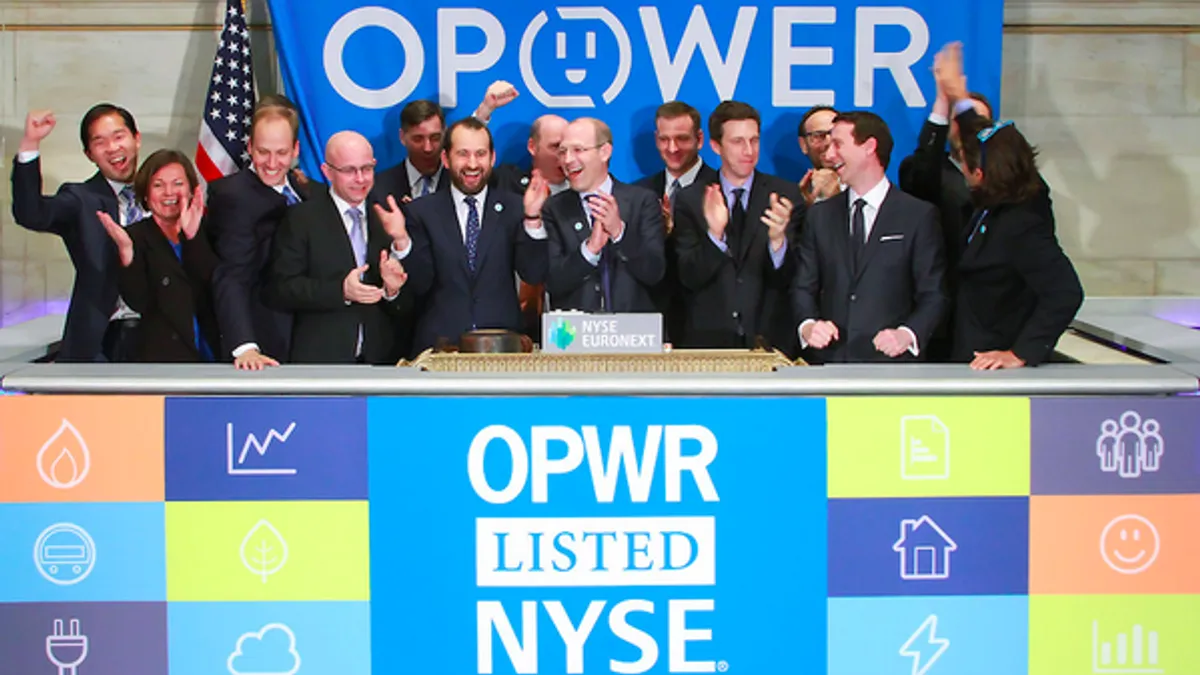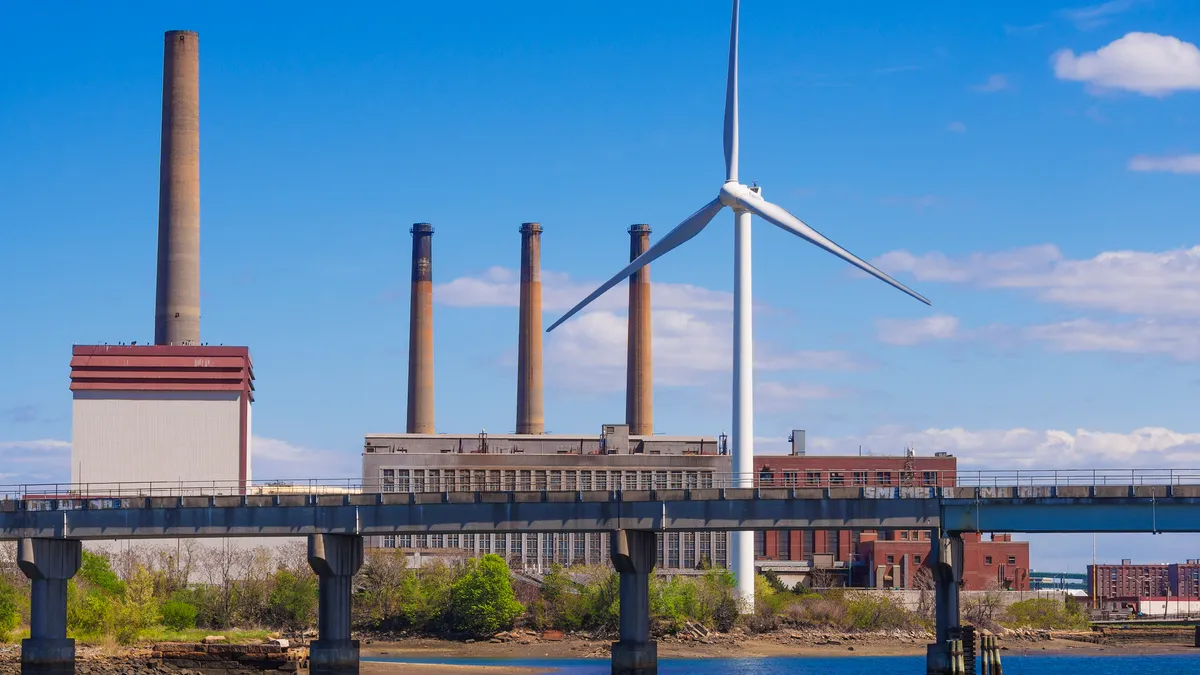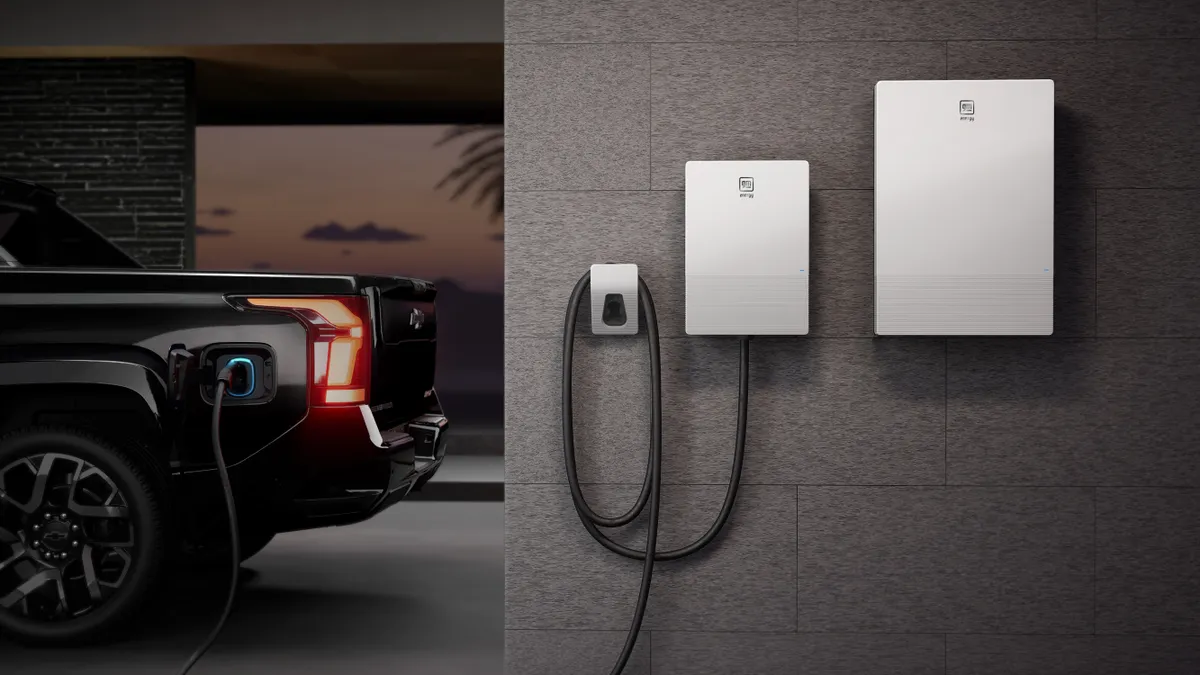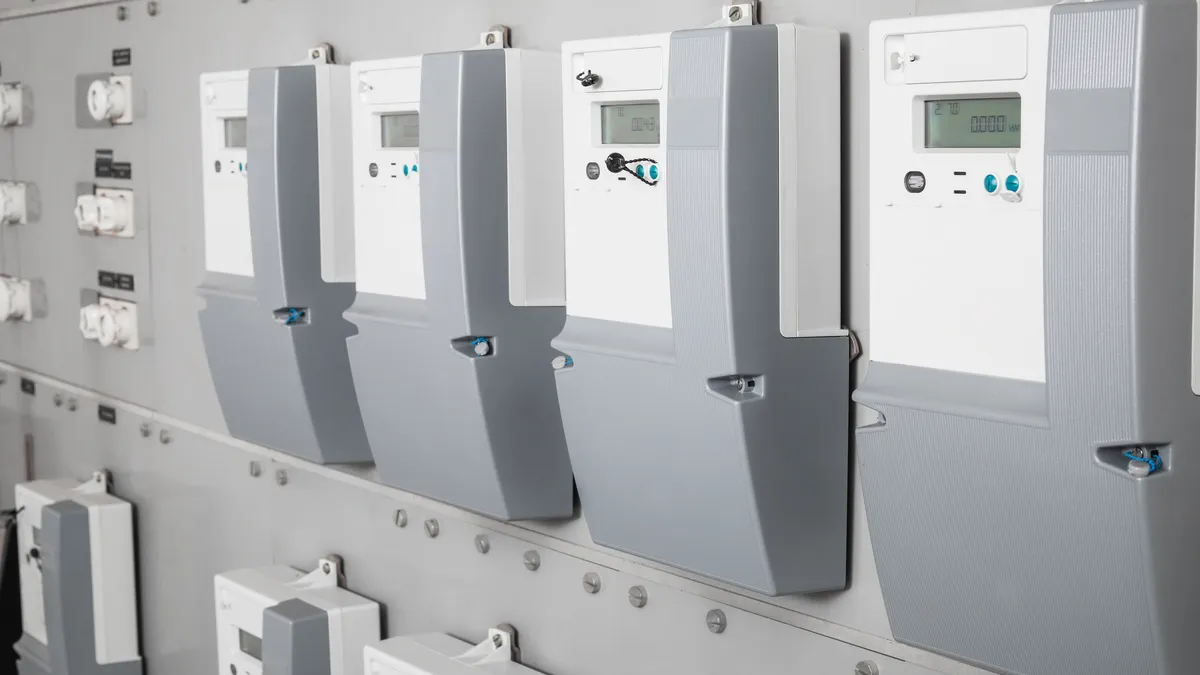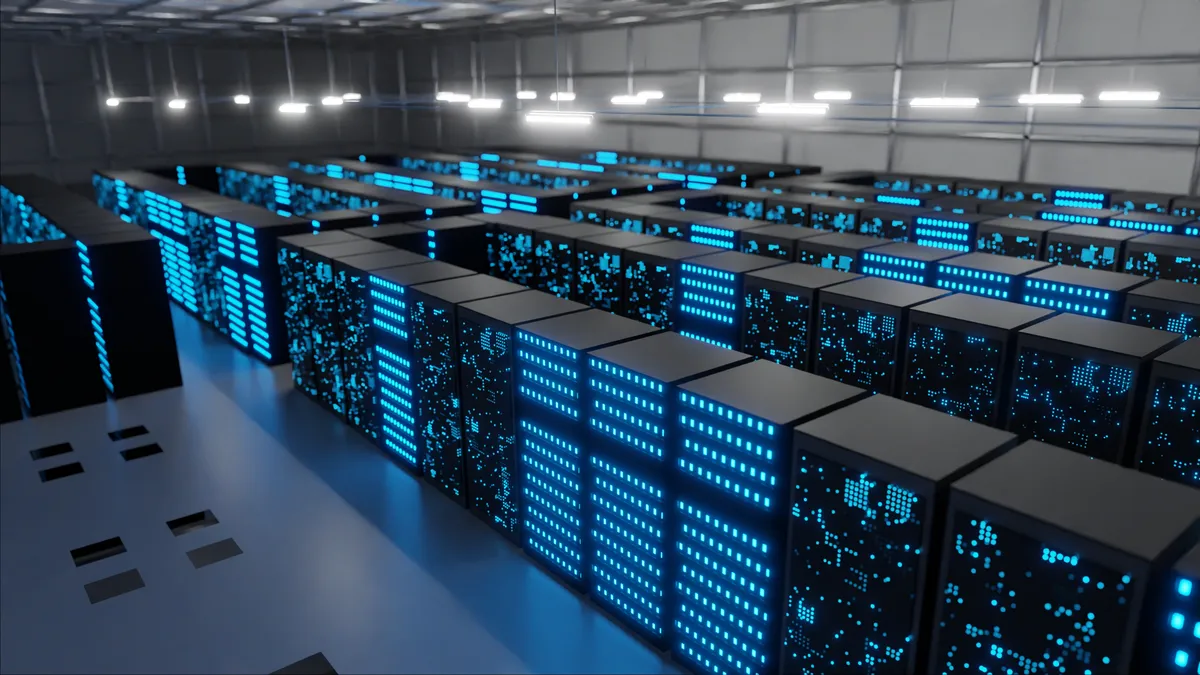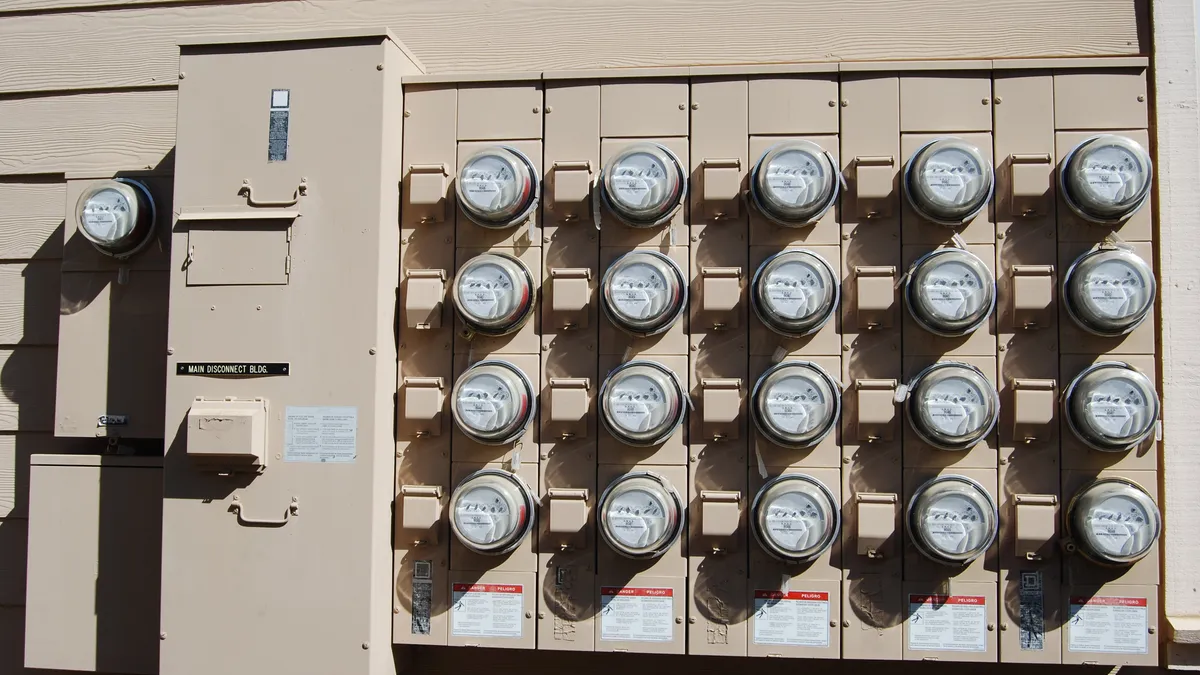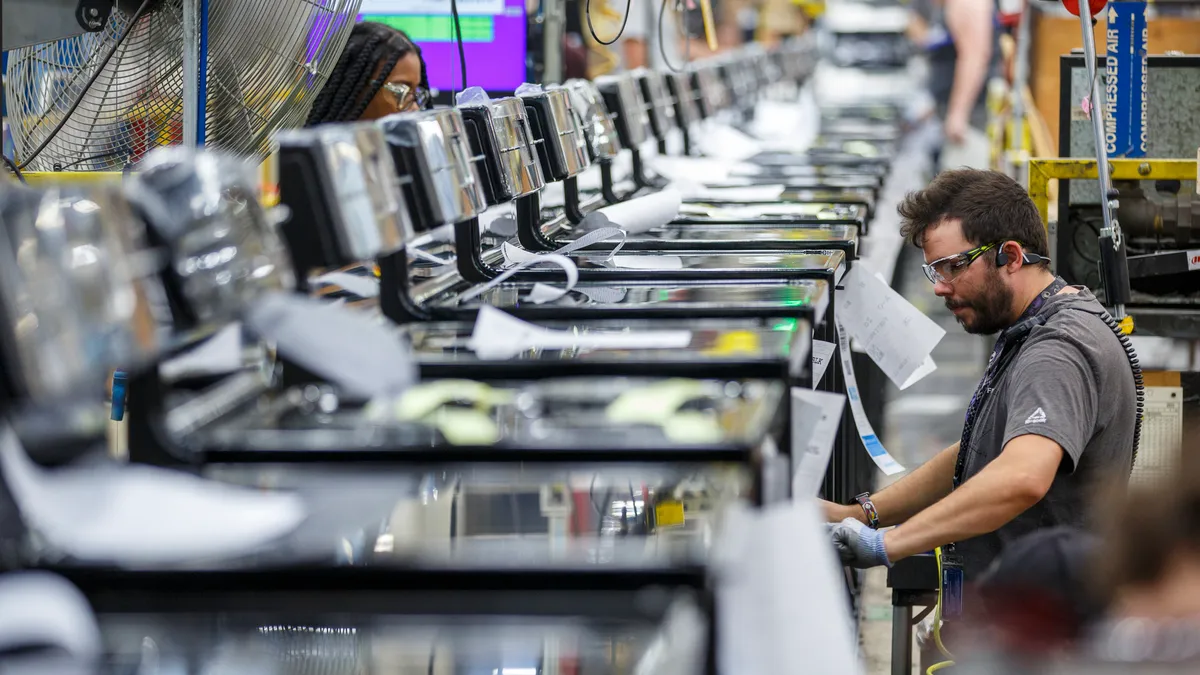Customer engagement has long been an afterthought for U.S. electric utilities. No longer.
With rising customer expectations and the emergence of new market entrants, utilities today are becoming more and more focused on the customer relationship.
Until the last five to ten years, "you wouldn’t even have seen utilities that had a chief customer officer," Neel Gulhar, the director of strategy and product marketing for Opower’s customer engagement platform, told Utility Dive in an interview. "Today there are chief customer officers in almost every major utility. That kind of speaks [for] itself."
But despite the industry’s best efforts, there’s still a significant gap between where utilities want to be and where they are today.
"It’s a relatively new focus of theirs," Alex Laskey, president and founder of Opower, explained to Utility Dive. "As a consequence, there are tremendous holes in their IT infrastructure and in their business capacity to deliver what customers want."
Opower shifts attention from efficiency to engagement
Coming on the heels of its much-hyped initial public offering (IPO), Opower — the software-as-a-service startup that pioneered behavioral energy efficiency — is shifting its attention to the utility of the future.
In the past, utilities "had a transactional relationship with their customers," Laskey said. "The less engagement, the better — from their perspective and the customer’s perspective."
Unlike the financial services and telecom industries — which "radically changed the information services they provide to their customers" — electric utilities "lagged because it wasn’t a priority," Laskey said. "They didn’t need to do it."
"It wasn’t that long ago that [Opower was] a single product company," Laskey explained. "We started as newcomers to the industry […] with the idea that if we could provide people with better information we could help them save energy."
"As we move into the next phase of the company’s progression, we really view ourselves as a customer engagement platform," said Gulhar, who previously worked at Baltimore Gas & Electric for 11 years on its smart meter roll-out and demand-side management programs.
Opower has spent over 7 years and $100 million on the research and development of its customer engagement platform alone. The result? A flexible platform that may be able to help utilities transition from where they are today to the more customer-centric business models of the future.
That’s not to say that behavioral efficiency — the product that made Opower famous — is now an afterthought. It is one of a growing number of applications that can be easily plugged into Opower’s customer engagement engine.
The utility industry has changed significantly since Opower was first started in 2007, Laskey said, and that has led the company to put its focus on customer engagement.
"What we didn’t appreciate, because we were new to the industry, was that utilities hadn’t had much success — nor […] reason — to have positive engagement with their customers," Laskey said.
The traditional utility model came into question after the recession hit. The growth rate of electricity demand sunk to previously unheard of levels, new environmental regulations took effect, and new players such as solar leasing companies started competing with utilities. Like never before, utilities today are feeling what Gulhar called "customer exposure" — the threat of having their customers leave the grid.
"We think a lot of this [pressure] boils down to [utilities] being exposed on the customer side," Gulhar told Utility Dive.
The biggest chunk of a utility’s business is the hard assets – the power plants, the poles and wires, and so forth. "That’s where most of their resources appropriately are focused," Laskey explained. "But the biggest risk to their business — for the first time ever — is the relationship with the customer."
Without quite realizing the full potential of what it was building, Opower was creating the "capacity for utilities to engage their customers" through its behavioral efficiency platform, Laskey said. "We knew this, but we hadn’t come to articulate it."
"We evolved and the industry evolved," Laskey said. "In retrospect — it certainly didn’t seem so at the time — it seems like a pretty straightforward evolution."
Can Opower help utilities compete with distributed energy?
Today, Opower’s goal is to achieve a nationwide 1% reduction in overall energy consumption — unopened bottles of champagne line the desks at the company's headquarters in Arlington, Virginia, waiting expectantly for this very moment — but the company clearly sees the utility-customer relationship as its biggest opportunity.

Although utilities have long been and still are the de facto electricity providers in their service territories, an increasingly competitive marketplace and the emergence of distributed energy resources has raised the pressure on utilities.
Opower’s platform has data on 52 million electricity customers and can help a utility segment its customer base by location, load profile and other characteristics. Utilities can then use the software to target customers for certain programs and cross-sell services — fast becoming essential in a quickly evolving industry.
Opower has hinted it will move to put out applications that enable utilities to become more involved in emerging business models, such as distributed generation and community solar.
"If you can better engage your customer today, then if you do move into a distributed generation world, you then have the stickiness to be the solar provider for your customer," Gulhar said. "That’s really how we position ourselves as being a platform that can help [utilities] create that relationship with their customers for survival, depending on what happens in the industry over the next 30 years."
"We know that a large part of solar is marketing and customer acquisition, so that’s really where we feel our strength is," added Nick Payton, product marketing and strategy manager at Opower. "And that’s where our strength will be in the future — getting customers to open up content, engage with the content, personalizing that content and then possibly getting them to sign up."
Opower confirmed to Utility Dive that its next application will be related to customer care.
"We’re moving into customer care," Gulhar said. "Getting into call centers and seeing — how can we reduce [the utility’s] phone calls? How can we reduce their average handle time?"
"It’s going to be […] directly related to metrics around cost-to-serve savings," Gulhar added.
Opower also recently announced a partnership with FirstFuel, an energy efficiency building analytics software company. This represents a move for Opower into the commercial space, which has long been successful in helping utilities engage residential customers.
But underlying these moves — and any moves in the future — will be the customer engagement platform that Opower believes will help utilities on the journey to a more customer-centric future.
"We’ve built something that’s sustainable and scaleable and can transition to things like solar, like electric vehicles — anything you can imagine in the future," Payton said.



